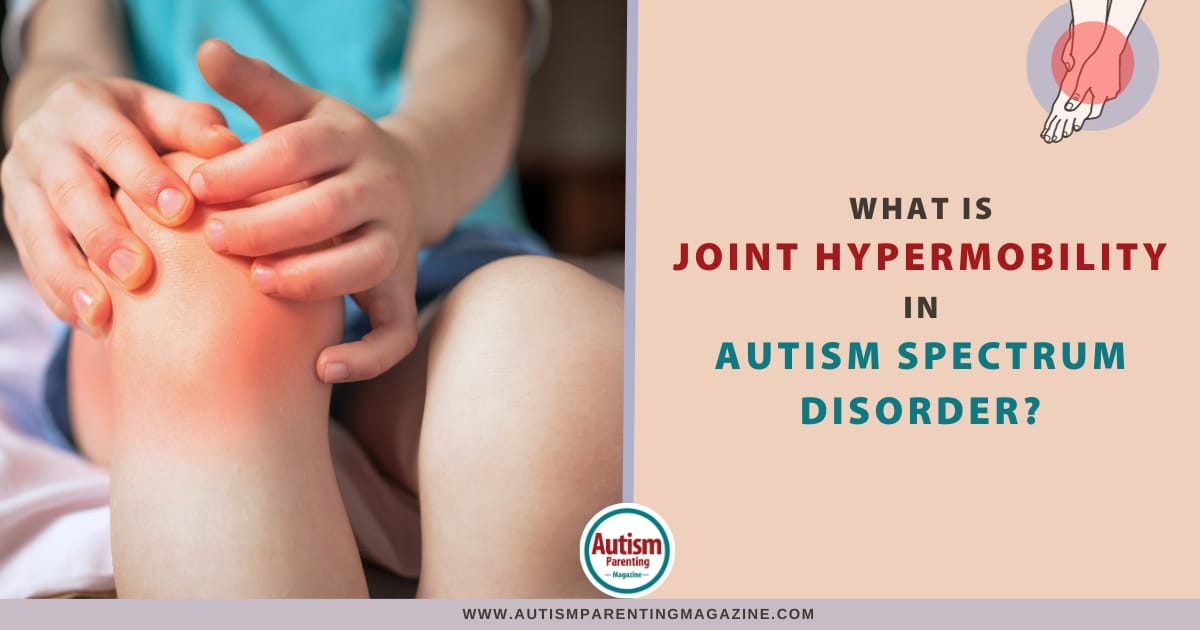Upon hearing something about joint hypermobility in autistic children, parents and caregivers can often wonder if it is something they should be concerned about. Are there regular joint hypermobility occurrences in autistic children?

There are many different comorbid diagnoses that children diagnosed with autism spectrum disorder (ASD) may have, and their parents and caregivers may want to know about them. Joint hypermobility might just be one of them.
What is Joint Hypermobility?
Joint hypermobility can typically be found and diagnosed in younger children, and different symptoms can include an increase in the number of musculoskeletal injuries and instances such as:
- joint injuries and sprains
- injuries, including the ligaments and muscles
- difficulty with shoulder and other joint instabilities
- osteoarthritis
Although there is increased flexibility with this condition, the risk and occurrence of injuries and joint pain are significantly higher. It is recommended that parents and caregivers let any orthopedic and other surgeons and specialists know if their child has been diagnosed with various types of joint hypermobility, as their treatments may differ according to the diagnosis.
Link Between Joint Hypermobility and Autism
There have been different studies that try to show that there may be a significantly higher occurrence of hypermobility issues in autism. This could be related to how the brain perceives and registers information from different body symptoms.
Since there can seem to be a misunderstanding between the individual’s brain and what their body is doing and how it responds, there can be a tendency among autistic people and other neurodivergent individuals to how they perceive and respond to pain. Unfortunately, the original test didn’t fully assess the amount of pain, brain imaging, and an individual experiencing the pain associated with joint hypermobility.
Another test was later administered, the Brief Pain Inventory-Short Form, and was better able to assess more areas of the body where an individual may be experiencing pain. Tests like these and others can work along with brain imaging for neurodivergent individuals to get a clearer view of what could happen when the autistic child is experiencing different levels of pain.
Tests like these help provide the necessary evidence that shows how joint hypermobility in autistic children is linked and how. The more knowledge that can be gained through different screening and testing, the more awareness and strategies there can be, and different services and support can be created to help these individuals now and in the future.
Past Studies and Future Research
As focused research on neurodivergent people and the likelihood of being diagnosed with hypermobility continues, the information that has already been collected provides the groundwork and a starting point for future studies.
Since both autism spectrum disorders and joint hypermobility can be diagnosed in early childhood, it can be challenging because different medical fields see and diagnose each condition. Both mental health and physical health are considered during these diagnoses.
There are times when these professions cross and work together; in such a case, it is rare for a child to be diagnosed with autism and joint hypermobility. Due to this rarity, combining the two conditions in research can be difficult. Still, as more cases and instances are documented and studied, the need to understand and treat them increases.
Click
here to find out more
How Can Parents Protect Their Children?
Parents and caregivers can protect their children by educating themselves about the different conditions that their child is living with. This can help further the parent and child’s journey to relief of pain and support and potential services in their future.
The parents can always talk to their child’s doctor for information. Their child’s doctor can answer some questions and always refer parents and children to specialists for more understanding.
Knowledge is power, and when that power helps someone’s child’s journey to healing and experiencing relief, it is an important endeavor. Moving forward is important and can potentially help so many people.
FAQs
Q: What is joint hypermobility?
A: Joint hypermobility refers to the ability of a person’s joints to move beyond the normal range of motion. Individuals with joint hypermobility joints are more flexible and can extend, bend, or rotate farther than what is considered typical.
Q: How common is joint hypermobility in individuals with Autism Spectrum Disorder?
A: Joint hypermobility is relatively common in individuals with ASD. Studies have shown that more people with ASD exhibit joint hypermobility than the general population. The exact prevalence can vary.
Q: What are the potential implications of joint hypermobility in ASD?
A: Joint hypermobility can lead to various physical and sensory challenges in individuals with ASD. It may contribute to difficulties with motor coordination, balance, and posture. Some individuals may experience joint pain or discomfort, affecting their daily activities.
Q: How can joint hypermobility be assessed and managed in individuals with ASD?
A: Assessing joint hypermobility involves clinical evaluation by a healthcare professional, often a physical therapist or a rheumatologist. Management strategies can include physical therapy to strengthen muscles, improve joint stability, and reduce pain.
Q: Are there any links between joint hypermobility and the core characteristics of ASD?
A: While there is no direct causal relationship, joint hypermobility, and ASD may share common genetic or developmental factors. Some researchers have explored possible connections between the two, but the exact nature of this relationship remains an area of ongoing study.
The post What Is Joint Hypermobility In Autism Spectrum Disorder? appeared first on Autism Parenting Magazine.
Get a FREE issue of Autism Parenting Magazine at https://www.autismparentingmagazine.com/freegift/
This content was originally published here.
